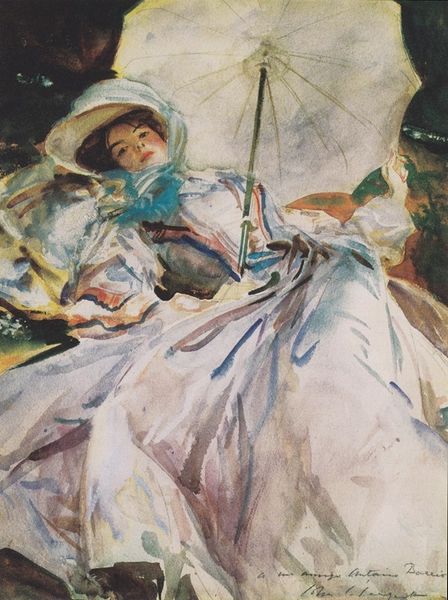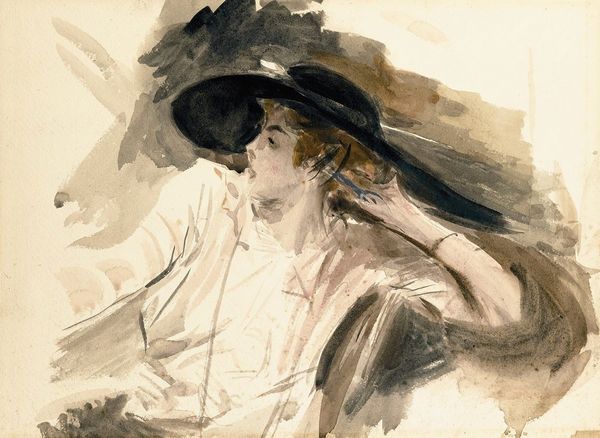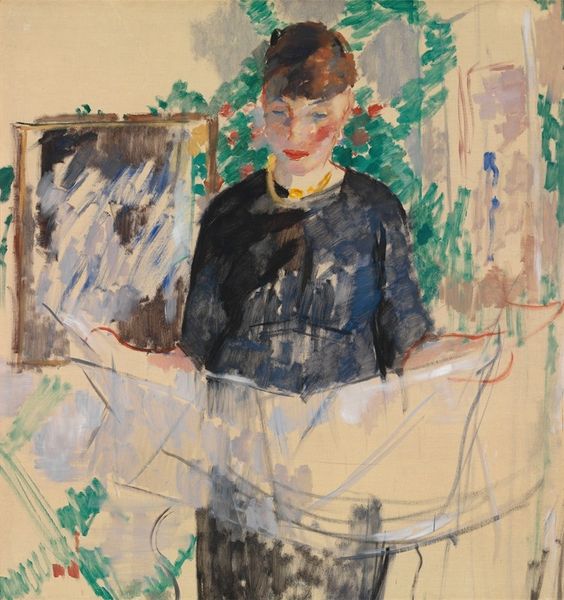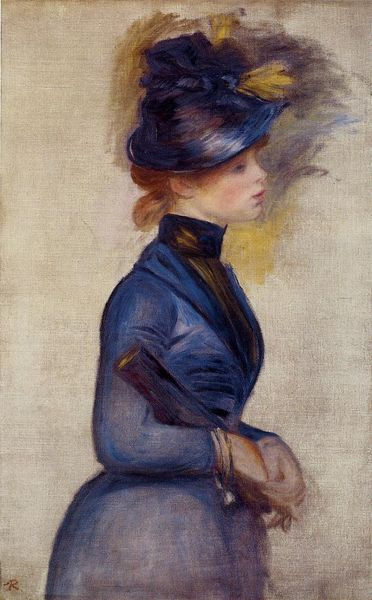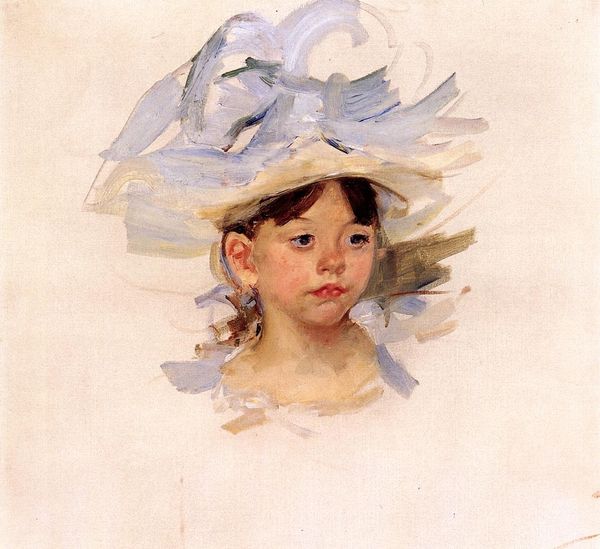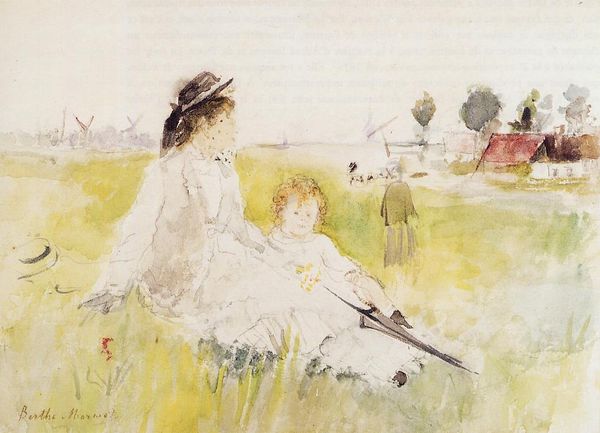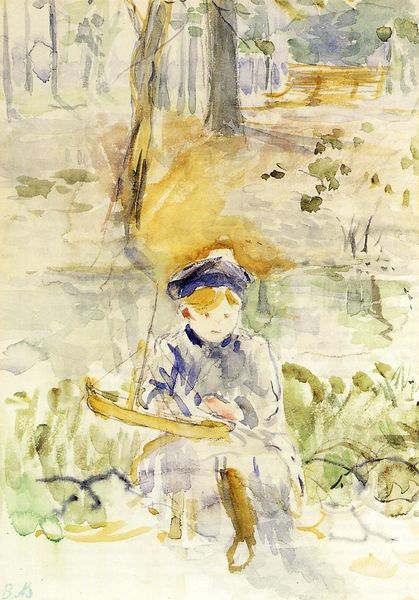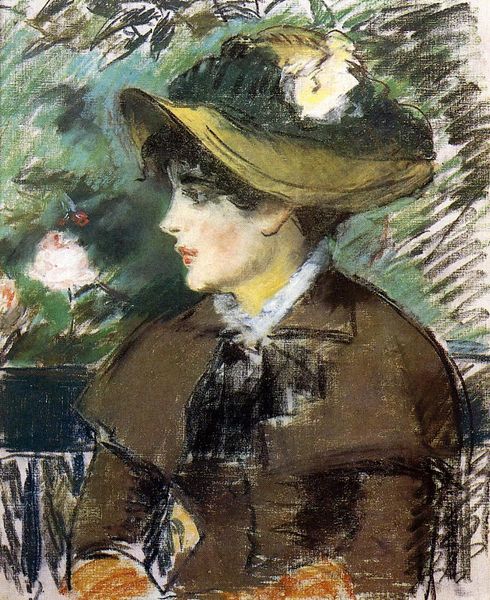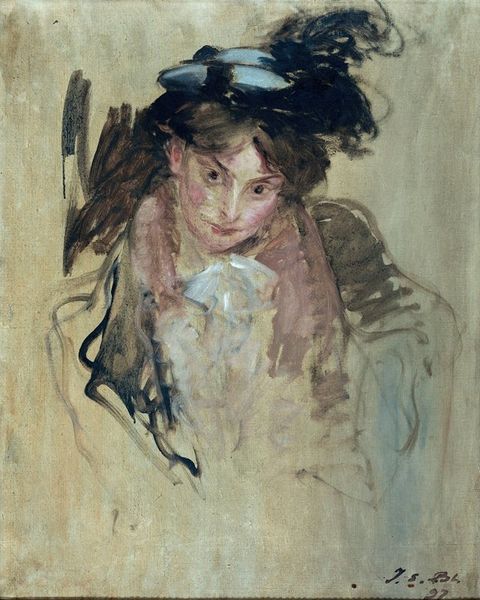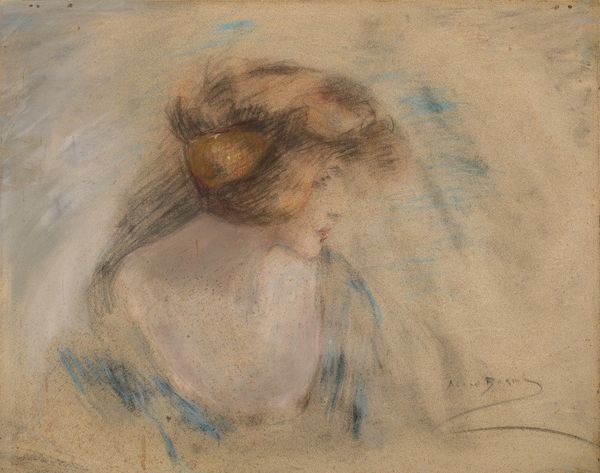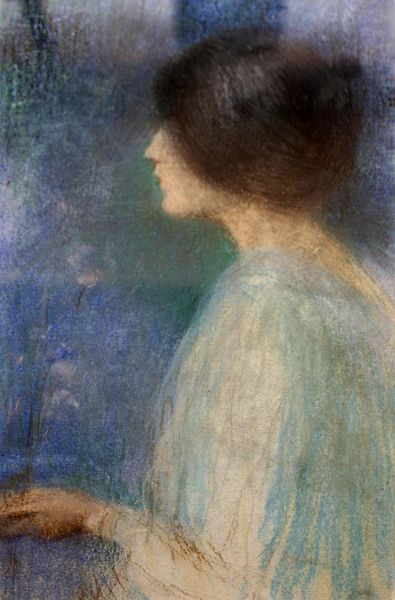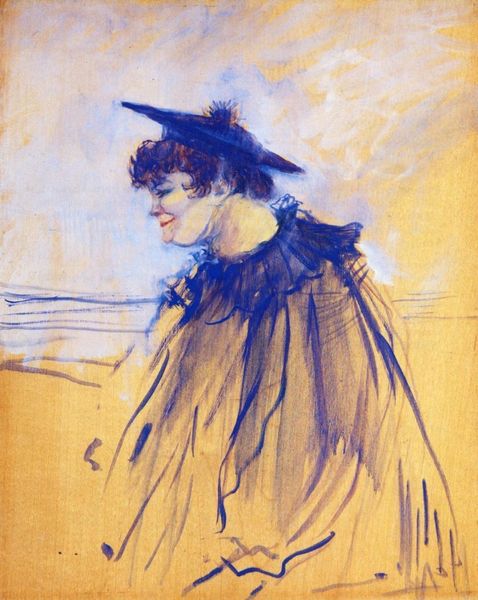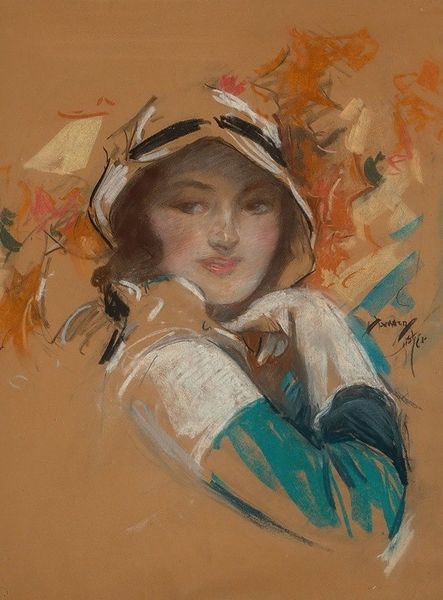
Copyright: Public domain
Editor: This is Berthe Morisot’s "Little Girl in a Garden," painted in 1884 using oils in a plein-air style. It’s wonderfully evocative, almost dreamlike. How do you interpret this work? Curator: The sketchiness of the brushstrokes certainly contributes to that dreamlike quality. It captures a fleeting moment, a child almost dissolving into the garden itself. Think about the limitations placed upon women artists, particularly those of the Impressionist circle. Morisot often depicted domestic scenes and women, finding profundity within what was deemed ‘minor’ subject matter. How does her focus on a girl in a garden challenge societal expectations of both women and art? Editor: That's a perspective I hadn't considered. The fact that she's depicting a young girl within the domestic sphere…it speaks volumes about the limited roles women were afforded at that time. Did her position as a woman artist influence the way she approached the impressionist style? Curator: Absolutely. The Impressionist movement, while seemingly revolutionary in its aesthetics, was still largely dominated by men. Morisot, alongside Mary Cassatt, offered a distinct feminine perspective. Their gaze often lingered on the intimate moments of women's lives, portraying a reality often overlooked or dismissed by their male counterparts. We see a negotiation of private versus public space. Do you get that sense from the composition? Editor: Yes, I do. The blurry background almost merges with the figure, emphasizing the intimate, personal space of the garden. It makes me wonder about the girl’s internal world, what she’s thinking or feeling in that moment of quiet contemplation. Curator: Exactly. And how can we relate this back to Morisot's own struggle as a woman within the Parisian art world, to make a name for herself? What can the seemingly "insignificant" everyday experiences teach us about identity, agency, and power relations? Editor: This has made me rethink the painting completely. It’s not just a pretty picture; it’s a commentary on the female experience of the time, viewed through Morisot's very particular lens. Curator: Precisely! Seeing art as a product of its time allows us to decode its many hidden messages, revealing the power dynamics embedded within seemingly simple images.
Comments
No comments
Be the first to comment and join the conversation on the ultimate creative platform.
